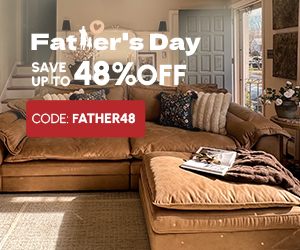Household chores can consume a significant amount of time, often leaving you feeling overwhelmed and exhausted. One effective strategy to alleviate this burden is to declutter regularly. By minimizing the number of items in your home, you can significantly reduce the time spent cleaning and maintaining your space. This guide will provide you with practical tips and strategies to declutter regularly, helping you create a more organized and efficient home environment.
Understanding the Importance of Decluttering
Before diving into the decluttering process, it’s essential to understand why decluttering is crucial for reducing cleaning time. Here are some key benefits:
- Easier Cleaning: Fewer items mean less dusting, fewer surfaces to clean, and less time spent moving things around to clean.
- Less Stress: A clutter-free home can reduce stress and create a more peaceful living environment.
- Improved Efficiency: With fewer items, it’s easier to find what you need, saving time on daily tasks.
- Enhanced Aesthetics: A decluttered home looks more organized and visually appealing, contributing to a more pleasant living space.
Steps to Declutter Your Home
1. Start Small
Decluttering can be overwhelming, especially if you have a lot of stuff. Start with small, manageable areas, such as a single drawer or a shelf. This approach helps build momentum and makes the task less daunting.
2. Set Specific Goals
Set specific, achievable goals for each decluttering session. For example, aim to declutter one room per week or spend 15 minutes each day tidying up a specific area. Clear goals provide direction and motivation.
3. Use the Four-Box Method
The four-box method is an effective way to organize your decluttering process. Label four boxes or bins as follows:
- Keep: Items you use regularly and want to keep.
- Donate/Sell: Items that are in good condition but no longer needed.
- Trash: Items that are broken, damaged, or unusable.
- Storage: Items that are seasonal or rarely used but have sentimental value.
As you declutter, place each item into one of these boxes. This method helps you make decisions quickly and keeps the process organized.
4. Declutter by Category
Another effective strategy is to declutter by category rather than by room. For example, gather all your clothes from various parts of the house and sort through them at once. This method helps you see the total amount of each type of item you own, making it easier to identify duplicates and unnecessary items.
5. Apply the “One In, One Out” Rule
To prevent clutter from accumulating again, adopt the “one in, one out” rule. Whenever you bring a new item into your home, get rid of an old one. This practice helps maintain a balanced amount of belongings and prevents clutter from building up.
Decluttering Specific Areas
1. Kitchen
- Countertops: Clear countertops of non-essential items. Store appliances and utensils in cabinets or drawers to create a clean, open space.
- Pantry: Regularly check for expired or unused food items and dispose of them. Organize the pantry with clear containers and labels to make it easier to find what you need.
- Cabinets: Declutter cabinets by removing duplicate items and gadgets you rarely use. Keep only the essentials.
2. Living Room
- Surfaces: Clear surfaces of unnecessary decor and items. Limit decorations to a few meaningful pieces to maintain a tidy appearance.
- Storage: Use storage solutions like baskets, bins, and shelves to organize items like remote controls, magazines, and toys.
- Furniture: Assess your furniture and consider removing pieces that are not functional or add to the clutter.
3. Bedroom
- Closets: Sort through clothes and accessories regularly. Donate or sell items you no longer wear or need. Use organizers like hangers, bins, and shelves to keep your closet tidy.
- Nightstands: Keep nightstands clear of clutter by limiting items to essentials like a lamp, alarm clock, and a book.
- Under the Bed: Use under-bed storage containers to store items like seasonal clothing or extra bedding.
4. Bathroom
- Countertops: Clear bathroom countertops of non-essential items. Store toiletries in cabinets or drawers.
- Medicine Cabinet: Regularly check for expired medications and dispose of them properly. Organize remaining items for easy access.
- Shower/Bathtub: Limit the number of products in your shower or bathtub. Keep only the essentials and store extras in a cabinet.
Maintaining a Clutter-Free Home
1. Regular Maintenance
Regularly scheduled decluttering sessions are key to maintaining a clutter-free home. Set aside time each week or month to assess and declutter areas that tend to accumulate items. Regular maintenance prevents clutter from building up and makes the process less overwhelming.
2. Create a Decluttering Schedule
Develop a decluttering schedule that fits your lifestyle. For example, dedicate 15 minutes each day to decluttering a specific area or set aside an hour each weekend for a larger decluttering project. Consistency is crucial to keeping your home clutter-free.
3. Involve the Whole Family
Encourage family members to participate in the decluttering process. Assign specific tasks or areas to each person and work together to maintain a clean, organized home. Teaching children the importance of decluttering can help instill good habits early on.
4. Limit New Purchases
Be mindful of new purchases and avoid buying items that aren’t necessary. Before making a purchase, ask yourself if the item is truly needed and if it will add value to your life. This practice helps prevent new clutter from accumulating.
Conclusion
Decluttering regularly is a powerful strategy for reducing cleaning time and maintaining a clean, organized home. By starting small, setting specific goals, using effective methods like the four-box system, and decluttering by category, you can transform your living space. Maintaining a clutter-free home involves regular maintenance, creating a schedule, involving the whole family, and limiting new purchases. Embrace the decluttering process and enjoy the benefits of a cleaner, more efficient home, giving you more free time to spend on activities you love.










